Monuments in South Asia offer a glimpse into the rich cultural heritage of the region, spanning from prehistoric times to the present day. Through archaeological study, a multitude of ancient monuments have been discovered, which stand as a testament to the art and cultures of South Asia.
These monuments not only provide valuable unique insights into the history of the region, but also showcase the evolution of the region’s architecture and art, reflecting the diversity and cultural richness of South Asian heritage.
Kuensel Phodrang, Bhutan
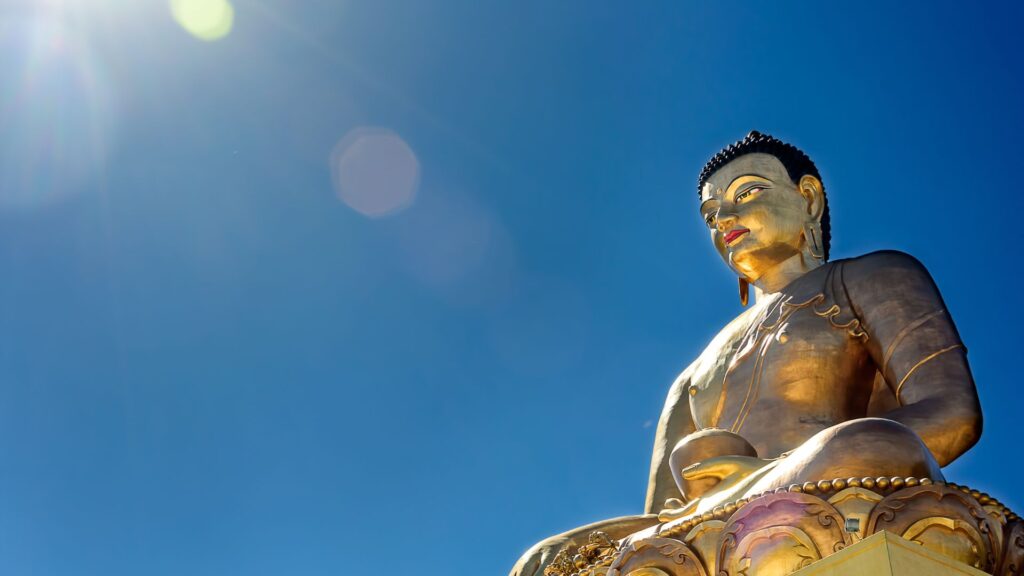
Kuensel Phodrang, also known as Buddha Point, is a must-see attraction in Bhutan’s capital city, Thimphu. It is one of the world’s largest Buddha statues, standing feet 170 tall. The Buddha statue, gilded in gold, contains more than 100,000 smaller Buddha statues, nearly as many as the population of Thimphu, which is over 110,000.
The enormous golden statue is a popular tourist attraction in Thimphu Valley and one of the country’s most recognizable landmarks. Kuensel Phodrang was inaugurated in 2015 to commemorate the 60th anniversary of Bhutan’s fourth king, Jigme Singye Wangchuck, who helped modernize the country.
Jaswant Thada, India
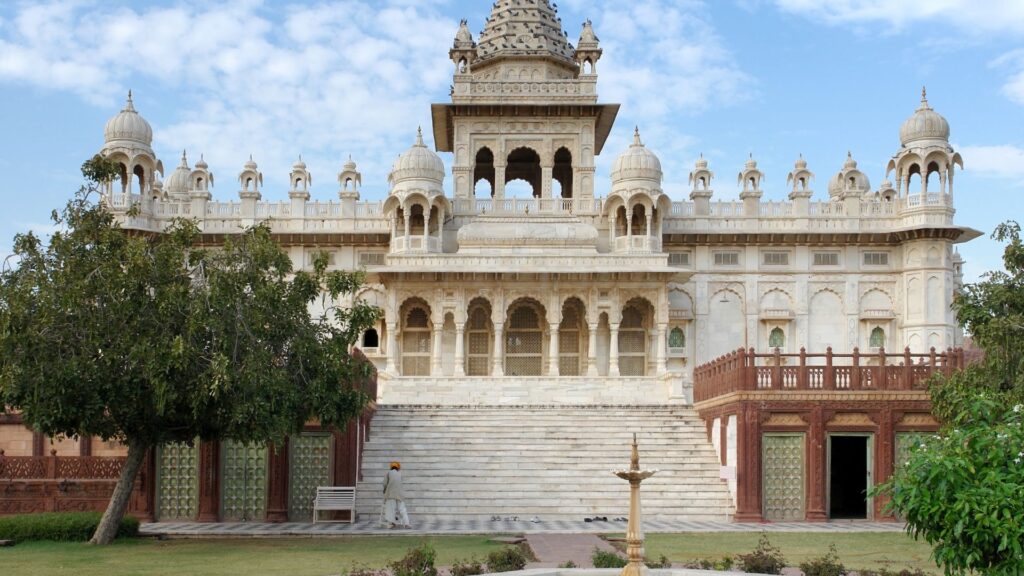
Jaswant Thada, also known as the “Taj Mahal of Marwar” is an ancient cenotaph located in the Indian state of Rajasthan. it was built by Maharaja Sardar Singh as a memorial to his father, Maharaja Jaswant Singh II. The mausoleum is made from intricately carved sheets of white marble, showcasing the genius of the sculptors who created it. Carvings and artwork adorn its domes and simple sculptures, making it a unique sight in South Asia.
Sukhothai, Thailand

Sukhothai, located in the north of Thailand, has captivated visitors for centuries. The ancient city was the first capital of the Kingdom of Siam in the 13th and 14th centuries. The Sukhothai historical park boasts nearly 200 temples that have been excavated and partly reconstructed, providing a glimpse into Thailand’s early civilization.
At the center of this UNESCO World Heritage Site lies Wat Phra Phai Luang, the largest temple outside the city walls. The ruins of Sukhothai are some of the best-preserved monuments in Southeast Asia and offer a unique experience to travelers. Sukhothai is a small city, but it remains one of Thailand’s most popular tourist destinations due to its unique cultural and historical significance.
Sigiriya, Sri Lanka
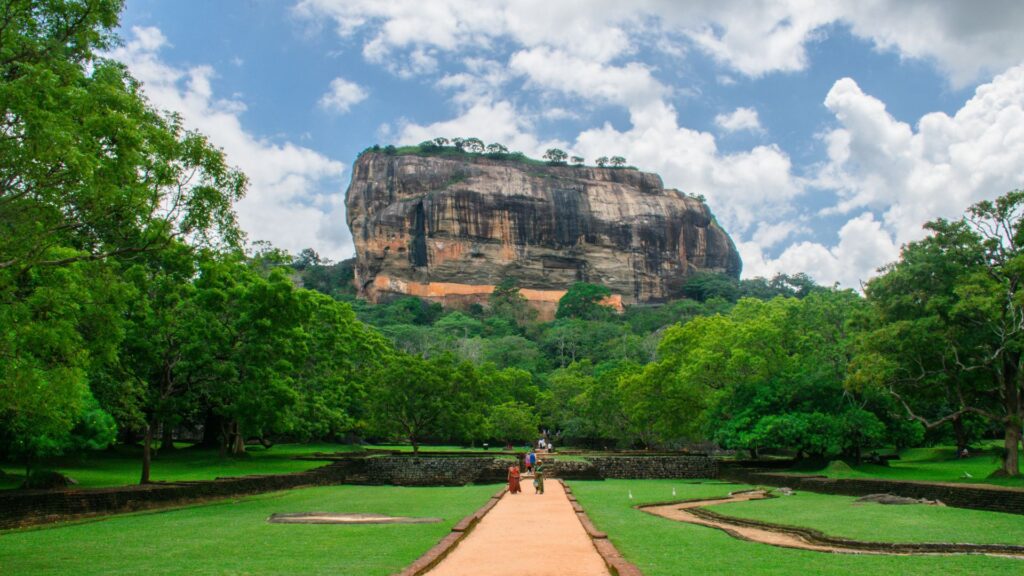
Sigiriya, located in the northern Matale District near the town of Dambulla in the Central Province of Sri Lanka, is an ancient rock fortress that has managed to stand the test of time for over 1500 years. The 660-foot-tall fortification, built by King Kashyapa, is now known as the eighth wonder of the world.
With its significant archaeological importance, it attracts thousands of visitors each year who marvel at its magnificence. The imposing fortress was once the capital of the Sinhalese kingdom and was built upon a lava plug left over from an extinct volcano. Visitors can also enjoy viewing the ancient frescoes that adorn its walls.
Borobudur, Indonesia
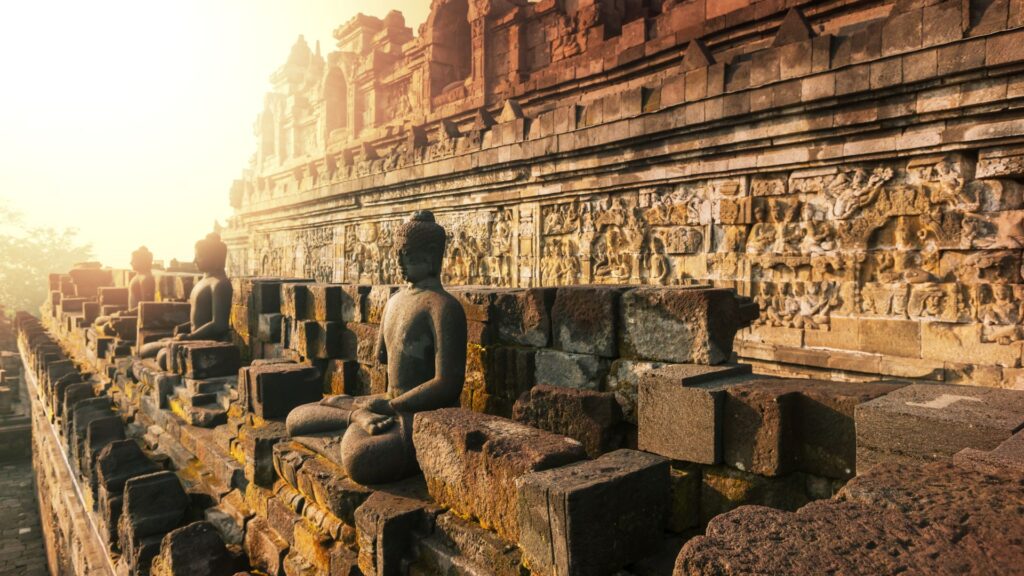
Borobudur, located in the Kedu Valley in Central Java, Indonesia, is one of the most impressive ancient monuments in South Asia. Built between 778 and 850 CE by the rulers of the Shailendra Dynasty, this Buddhist temple is the largest of its kind in the world and is considered a great archaeological site alongside Bagan in Myanmar and Angkor Wat in Cambodia.
Overlooking the lush hills of central Java, this monumental structure draws pilgrims from all over Southeast Asia. Its intricate sculptures and carvings have puzzled historians for centuries, as it was buried beneath volcanic ash for centuries before being rediscovered and restored to its former glory.
Angkor Wat, Cambodia
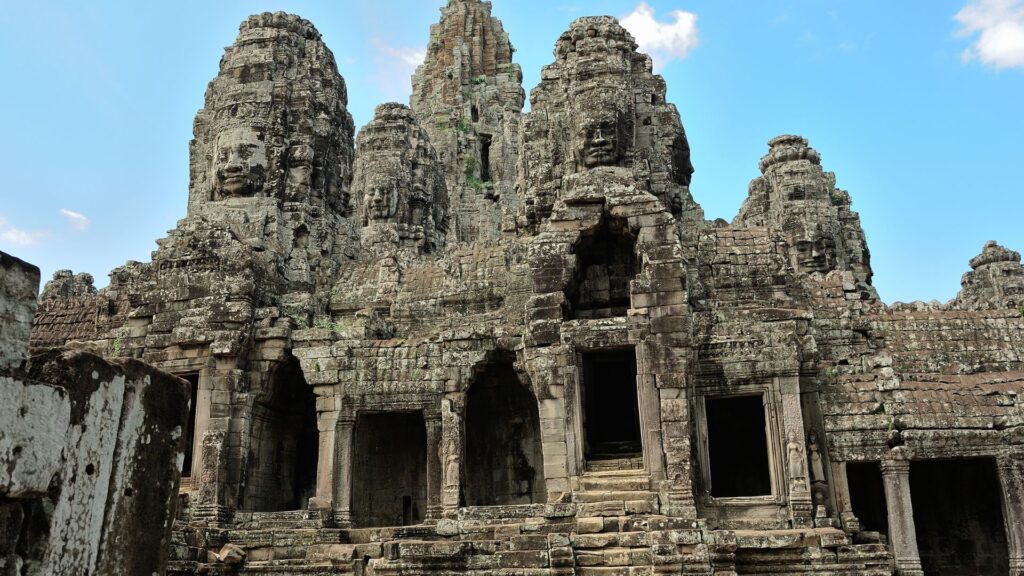
Angkor Wat in Siem Reap, Cambodia, is one of the most renowned and ancient monuments in South Asia. Built by King Suryavarman II in the 12th century, the temple mountain is a spiritual home for the Hindu god Vishnu. With a site area of 162 hectares, Angkor Wat is considered to be the largest religious monument in the world, covering more than 400 acres. Researchers have uncovered that the city may have been home to 700,000 to 900,000 people at it’s peak during the 13th century, making it one of the largest pre-modern cities in the world.
This architectural triumph is laden with intricate carvings and bas-reliefs, an artistic technique that involves lightly carving a design into a surface, depicting stories from Hindu mythology. Angkor Wat is the largest religious construction project in Southeast Asia and the most significant archaeological site in the region.
Taj Mahal, India
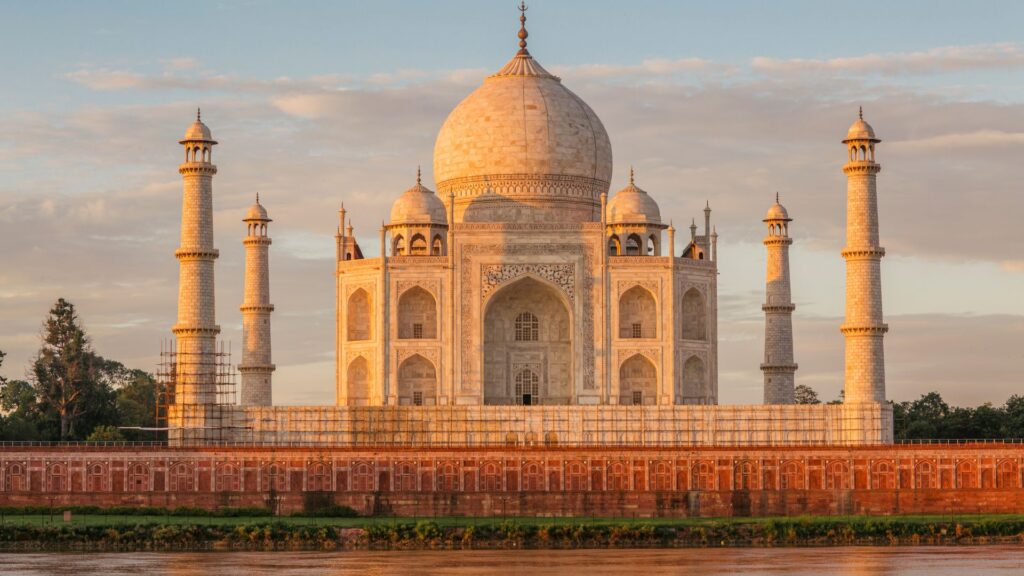
The Taj Mahal is one of the most renowned ancient monuments in South Asia and a symbol of India’s rich history. Located in Agra, Uttar Pradesh State, on the banks of the Yamuna River, the Taj Mahal was commissioned by Mughal emperor Shah Jahan in 1631 as a mausoleum for his beloved wife, Mumtaz Mahal.
The white marble complex is an outstanding example of Mughal architecture and is widely considered one of the Seven Wonders of the World. This grand monument, which has become a symbol of love and devotion, was constructed over the course of twenty years. This world heritage site is an awe-inspiring sight that draws millions of visitors each year to marvel at its beauty and intricacy.
Bagan, Myanmar
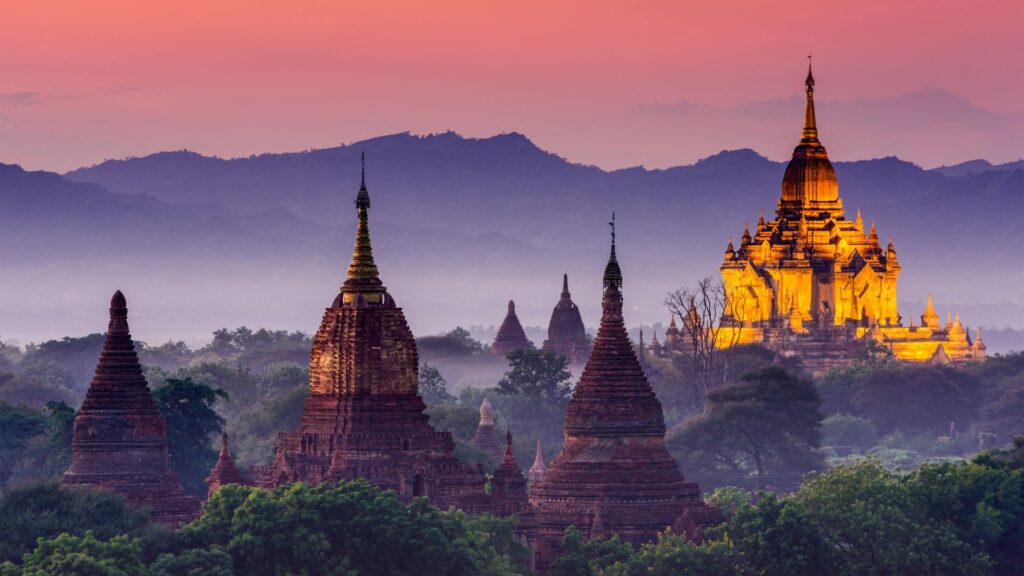
Myanmar’s Bagan is an ancient city in the Mandalay region. Bagan, a UNESCO World Heritage Site, was the capital of the Bagan Kingdom, a major power in Southeast Asia from the 9th to the 13th centuries. It is home to more than 2,000 Buddhist temples and other monuments from various eras, making it a sacred landscape with an awe-inspiringly rich history of over 1500 years. The temples of Burma are comparable to Angkor Wat in terms of scale and significance.
Ajanta and Ellora Caves, India
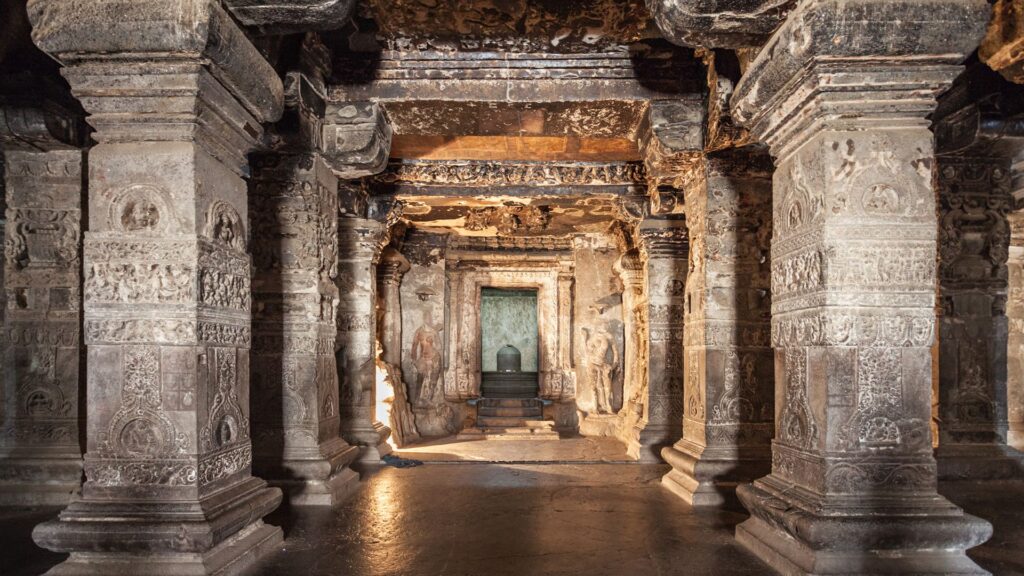
The Ajanta and Ellora Caves in India are two of the most spectacular ancient monuments in South Asia. Located in the hills of northwest India, some 200 miles from Mumbai, these Buddhist (Ajanta) and Hindu (Ellora) rock-cut caves date from 200 BCE to 900 CE. They provide a stunning example of ancient Buddhist and Hindu architecture and represent a major achievement in religious art.
Not only were they places of devotion, but due to their location on an ancient trade route, they also had important economic and commercial significance. Both caves have been designated a UNESCO World Heritage Sites since 1983 and are now under the care of the Archaeological Survey of India.

“Take memories only, leave footprints behind.”
